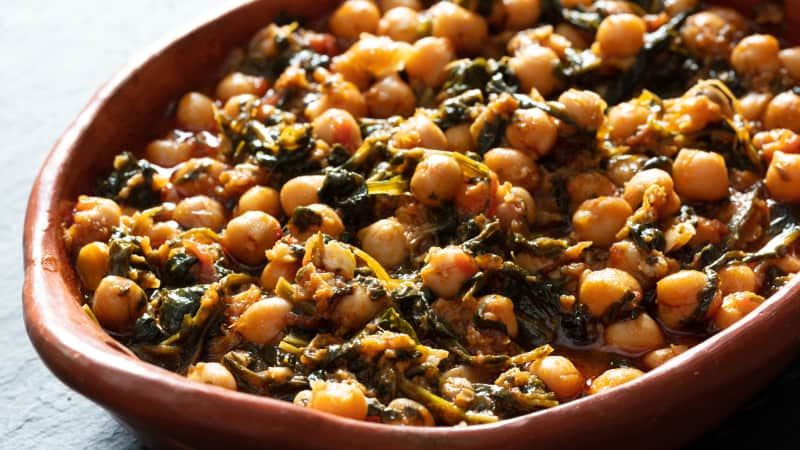Seville’s favorite vegetable-based dish is visually unassuming: a mound of butter-soft chickpeas interspersed with plenty of well‑cooked spinach and perhaps a few crispy bits of fried bread sticking out of it like sails. But its enticing aroma will stop you in your tracks. The smokiness of the paprika hits first, followed by earthy cumin, hints of musky-sweet saffron, and subtle hot-pepper heat, all of which are underpinned by garlic and fruity olive oil. Pile a forkful onto a piece of crusty bread and take a bite: Some of the slightly thickened juices seep into the crumb, but the rest are hidden away in the tiny folds of the spinach, so the mixture bursts with flavorful liquid as you chew.
This is espinacas con garbanzos, a hyper‑regional dish with strong Moorish influence that’s substantive and full of flavor. Most often, it’s a shared bar plate—a ración—that you’d find in any Sevillian taberna, where friends scoop up the stew-like mixture from a common cazuela (a shallow earthenware dish). But it can also be a quick, casual supper, the way it always has been for Seville native Marcos Lopez, who often cooks espinacas con garbanzos for his family in Brookline, Massachusetts.






